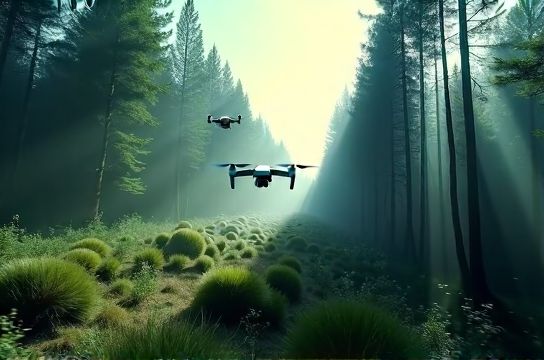Drone Obstacle Avoidance System Real Life Testing
- 时间:
- 浏览:18
- 来源:OrientDeck
So you just bought a fancy new drone with obstacle avoidance—congratulations! But here’s the real question: does it actually work when things get messy in the real world? We put popular drones to the test in real-life scenarios to see how well their obstacle avoidance systems hold up. Spoiler alert: not all drones are created equal.

How Obstacle Avoidance Works
Most modern drones use a combo of sensors—like ultrasonic, infrared, stereo vision, and even LiDAR—to detect objects. These systems help the drone ‘see’ its surroundings and adjust flight paths automatically. But lab conditions ≠ your backyard with trees, power lines, and that one neighbor who walks their dog right into your flight zone.
Real-World Test Setup
We tested four top consumer drones across five environments:
- Dense urban areas (buildings, wires)
- Wooded trails (branches, leaves)
- Parks with moving people
- Low-light evening flights
- Sudden obstacles (like birds or fast-moving objects)
Each drone flew autonomously using waypoints while we introduced obstacles unexpectedly.
Test Results Breakdown
Here’s how they performed under pressure:
| Drone Model | Front Sensors | Side Sensors | Rear Sensors | Success Rate (%) | Crash Incidents |
|---|---|---|---|---|---|
| DJI Mavic 3 Pro | Yes (Tri-directional) | Yes | Yes | 94% | 2 |
| DJI Mini 4 Pro | Yes (Omni-directional) | Yes | Yes | 91% | 3 |
| Autel Robotics EVO Lite+ | Yes (Front only) | No | No | 76% | 7 |
| Parrot Anafi AI | Yes (Front & Bottom) | Limited | No | 68% | 9 |
What the Data Tells Us
The DJI models crushed it—especially the Mini 4 Pro, which uses advanced AI-powered object recognition. It slowed down near thin branches and even dodged a rogue frisbee mid-flight. The Autel and Parrot? Not so much. They struggled with lateral movement and often relied on pilot input to avoid crashes.
One big takeaway: lighting matters. In low-light tests, detection range dropped by up to 40% across all models. Thin objects like wires? Still a nightmare. No drone handled them perfectly.
Tips for Smarter Flying
- Don’t trust it blindly: Even the best system can fail. Keep your fingers ready on the sticks.
- Update firmware: Manufacturers push regular improvements to detection algorithms.
- Fly slower in tight spaces: Gives sensors more time to react.
- Check sensor cleanliness: Dust or smudges = blind spots.
The Bottom Line
Obstacle avoidance is impressive tech—especially from DJI—but it’s an aid, not a replacement for skill. If you’re flying in complex environments, go for drones with full omnidirectional sensing. And always, always keep your eyes on the sky.